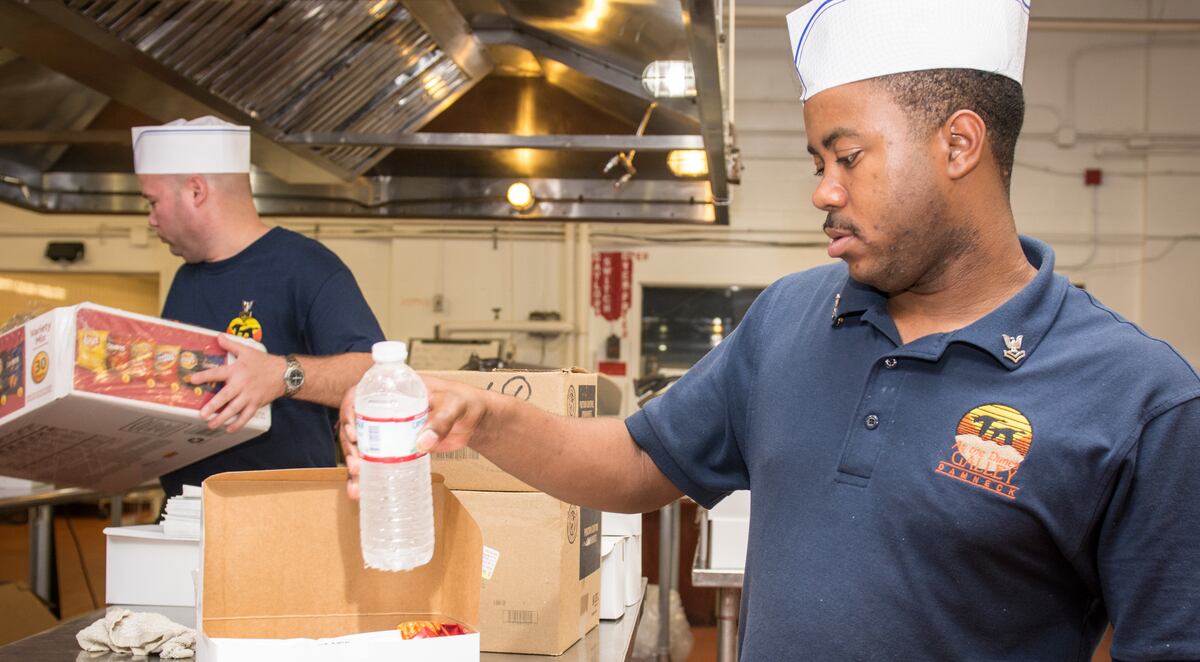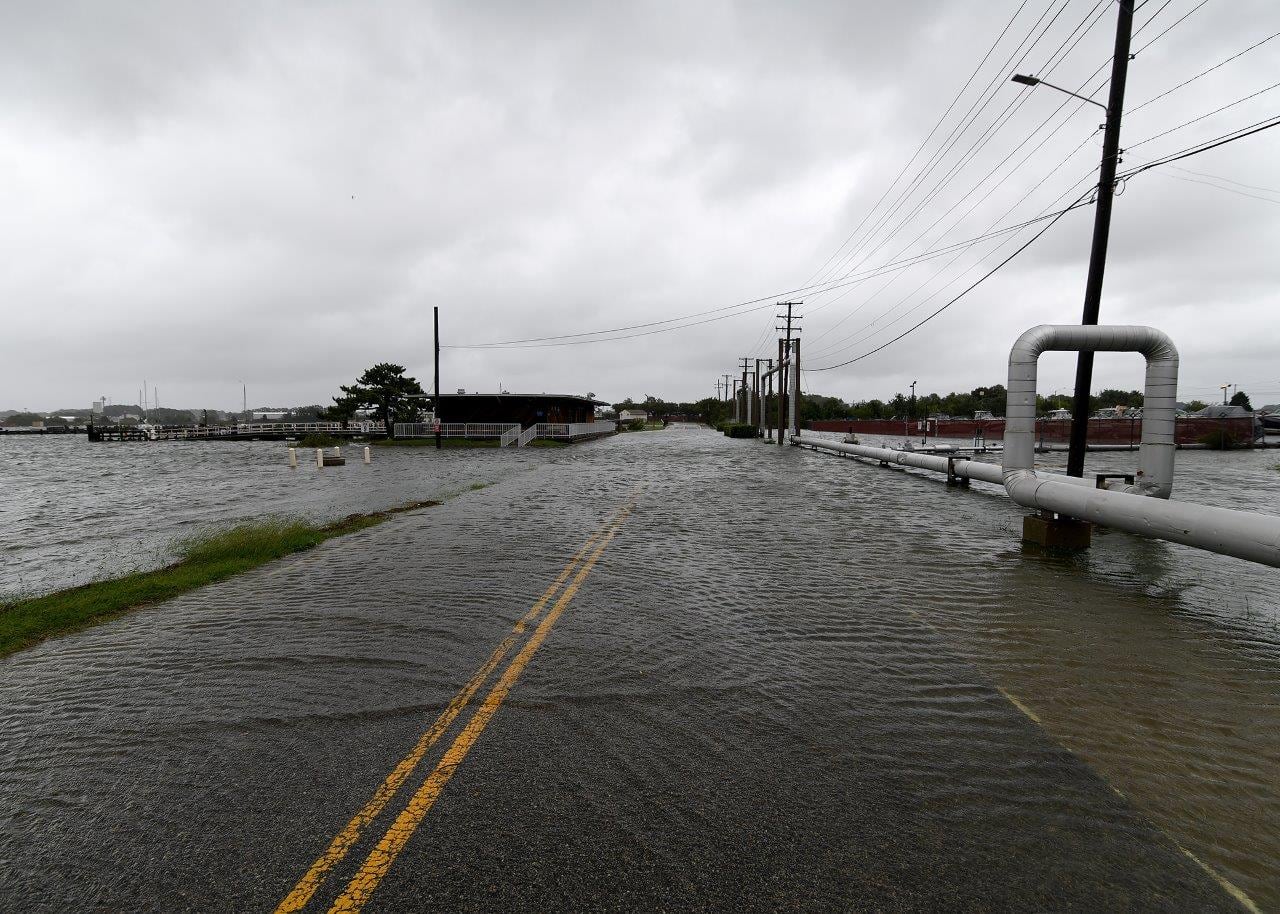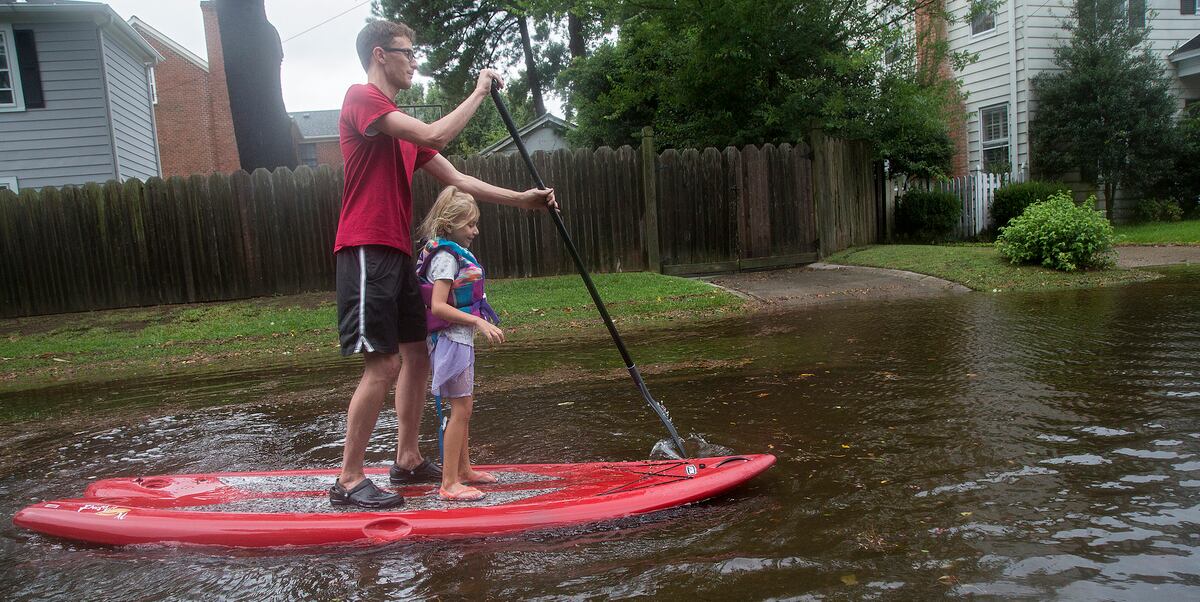Hurricane Dorian trundled into Hampton Roads but left Friday with no apparent damage to Navy property.
That’s why Rear Adm. Charles Rock, Navy Region Mid-Atlantic’s commander, on Friday evening ordered all installations in the region to return to normal operations.
By setting Tropical Cyclone Condition of Readiness V, he was indicating that Dorian “no longer poses a threat to the area,” according to an email his command sent to Navy Times.
Beyond some minor flooding in areas that routinely flood, Rock’s inspection teams found no problems left in Dorian’s wake. Beginning Saturday morning, his bases will begin to support the return of Navy vessels and aircraft that sortied earlier in the week.
“We were very fortunate the hurricane had minimal impact on Hampton Roads, but we are thinking of those who felt the strongest effects of the storm as they recover," said Rock in a prepared statement.
Rock’s order also requires military personnel and Department of Defense civilian workers who evacuated large swaths of eastern North Carolina, Virginia and Maryland to report their whereabouts using the Navy Family Accountability and Assessment System or through the mobile app.
RELATED

At 11 p.m. Friday, the National Hurricane Center in Miami warned Nova Scotia residents that Dorian was heading there “in a hurry” — hustling northeast at 25 mph — with potentially fierce winds expected to reach the Canadian province by late Saturday.
Hurricane trackers put Dorian about 200 miles (325 kilometers) south of Nantucket late Friday, packing 90 mph sustained winds.
Forecasters anticipate Dorian will skirt southeastern New England on Saturday morning before hitting Nova Scotia with hurricane force winds on Saturday. It then will begin to flag into a powerful post-tropical cyclone over eastern Canada.
Maine and portions of southeastern Massachusetts can expect to up to 4 inches of rain.





